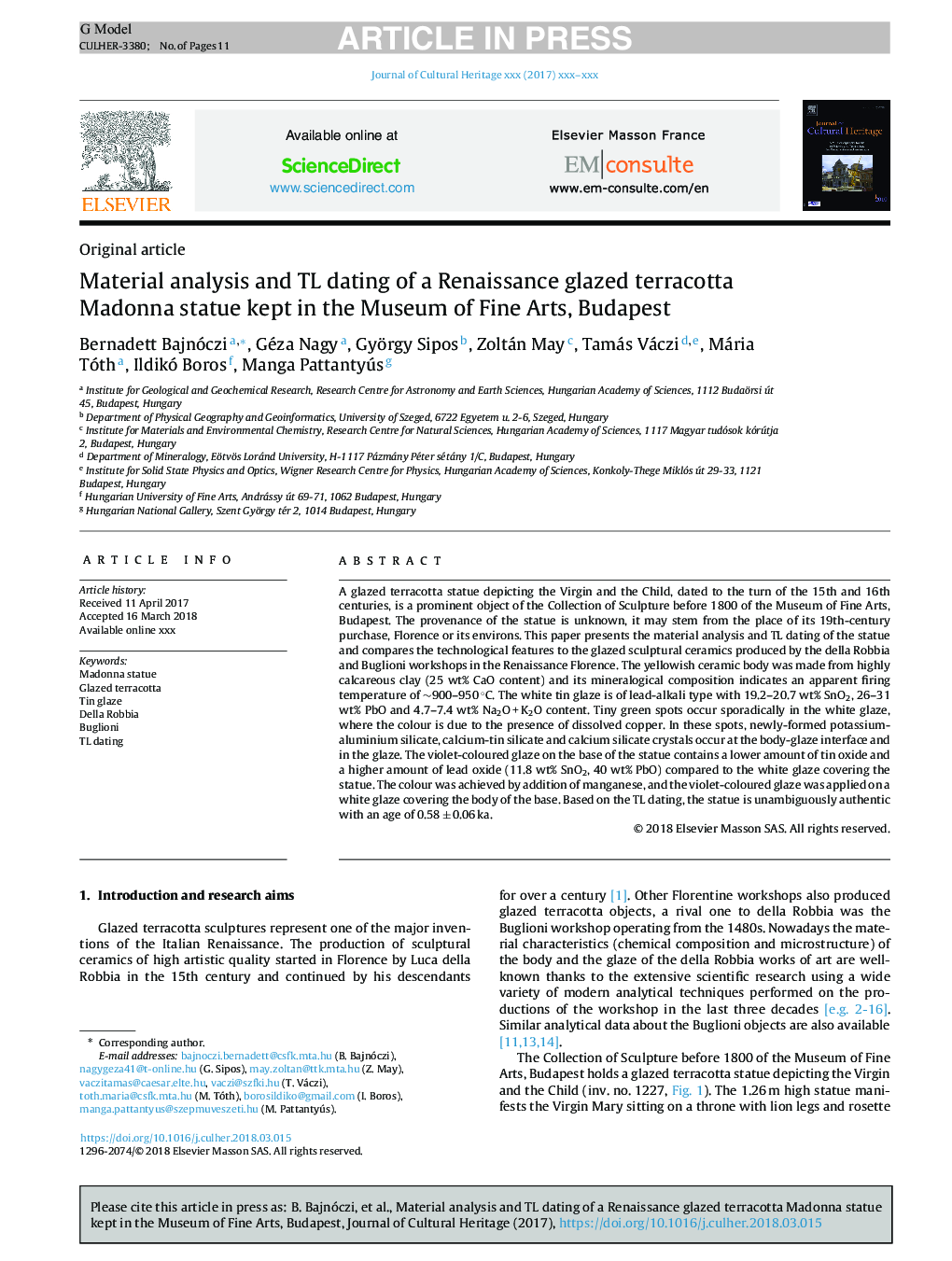| Article ID | Journal | Published Year | Pages | File Type |
|---|---|---|---|---|
| 8965275 | Journal of Cultural Heritage | 2018 | 11 Pages |
Abstract
A glazed terracotta statue depicting the Virgin and the Child, dated to the turn of the 15th and 16th centuries, is a prominent object of the Collection of Sculpture before 1800 of the Museum of Fine Arts, Budapest. The provenance of the statue is unknown, it may stem from the place of its 19th-century purchase, Florence or its environs. This paper presents the material analysis and TL dating of the statue and compares the technological features to the glazed sculptural ceramics produced by the della Robbia and Buglioni workshops in the Renaissance Florence. The yellowish ceramic body was made from highly calcareous clay (25 wt% CaO content) and its mineralogical composition indicates an apparent firing temperature of â¼900-950 ÌC. The white tin glaze is of lead-alkali type with 19.2-20.7 wt% SnO2, 26-31 wt% PbO and 4.7-7.4 wt% Na2O + K2O content. Tiny green spots occur sporadically in the white glaze, where the colour is due to the presence of dissolved copper. In these spots, newly-formed potassium-aluminium silicate, calcium-tin silicate and calcium silicate crystals occur at the body-glaze interface and in the glaze. The violet-coloured glaze on the base of the statue contains a lower amount of tin oxide and a higher amount of lead oxide (11.8 wt% SnO2, 40 wt% PbO) compared to the white glaze covering the statue. The colour was achieved by addition of manganese, and the violet-coloured glaze was applied on a white glaze covering the body of the base. Based on the TL dating, the statue is unambiguously authentic with an age of 0.58 ± 0.06 ka.
Keywords
Related Topics
Physical Sciences and Engineering
Chemistry
Physical and Theoretical Chemistry
Authors
Bernadett Bajnóczi, Géza Nagy, György Sipos, Zoltán May, Tamás Váczi, Mária Tóth, Ildikó Boros, Manga Pattantyús,
